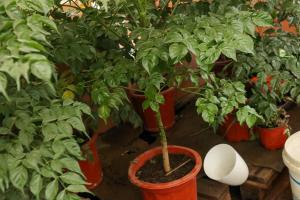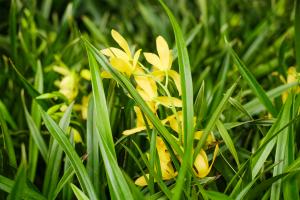What Are Brown Spots on Tomato Plant Leaves?
Tomatoes are one of the most beloved and widely cultivated crops in the world. As a versatile ingredient that can be used in a variety of dishes, they are highly valued in both home gardens and commercial farms. However, tomato plants are susceptible to a range of diseases and pests, and one of the most common problems that gardeners encounter is brown spots on tomato plant leaves. In this article, we will explore the causes and potential solutions for this issue.
Causes of Brown Spots on Tomato Plant Leaves
The most common cause of brown spots on tomato plant leaves is a fungal disease called early blight (Alternaria solani). This disease typically starts with small, dark spots on the lower leaves that gradually expand and develop irregular edges. As the disease progresses, the spots may also appear on stems and upper leaves, causing them to wilt and turn yellow.
Another fungal disease that can cause brown spots on tomato plant leaves is late blight (Phytophthora infestans). This disease is less common than early blight but can be more damaging. Similar to early blight, it causes dark spots on the leaves that eventually turn brown and develop target-like rings. The disease can also infect the fruits of the tomato plant, causing them to rot.
Brown spots on tomato plant leaves can also be caused by bacterial diseases such as bacterial spot (Xanthomonas campestris) and speck (Pseudomonas syringae pv. tomato). These diseases typically cause small, water-soaked lesions on the leaves that eventually turn brown and necrotic. They can also affect fruits, causing them to develop sunken spots and lesions.
Prevention and Control of Brown Spots on Tomato Plant Leaves
The best way to prevent brown spots on tomato plant leaves is to practice good plant hygiene. This includes rotating crops and avoiding planting tomatoes in the same location every year. It is also important to remove and dispose of infected plant material as soon as possible to prevent the spread of disease.
Fungal diseases such as early and late blight can be controlled through the use of fungicides. However, it is important to choose a fungicide that is specifically labeled for tomatoes and to follow the instructions carefully. Bacterial diseases are more difficult to control, as there are no effective chemical treatments available, and the best approach is to use resistant cultivars.
Watering practices can also play a role in preventing and controlling brown spots on tomato plant leaves. Overhead watering can spread fungal spores and increase the risk of disease. Instead, it is recommended to water the plants at the base and avoid getting the leaves wet. This can also be achieved through the use of drip irrigation systems.
Conclusion
Brown spots on tomato plant leaves can be a frustrating problem for gardeners, but with the right knowledge and tools, it is possible to prevent and control the issue. By practicing good plant hygiene, choosing disease-resistant cultivars, and carefully monitoring watering practices, you can enjoy a healthy harvest of delicious, ripe tomatoes.

 how many times do yo...
how many times do yo... how many planted tre...
how many planted tre... how many pine trees ...
how many pine trees ... how many pecan trees...
how many pecan trees... how many plants comp...
how many plants comp... how many plants can ...
how many plants can ... how many plants and ...
how many plants and ... how many pepper plan...
how many pepper plan...






























